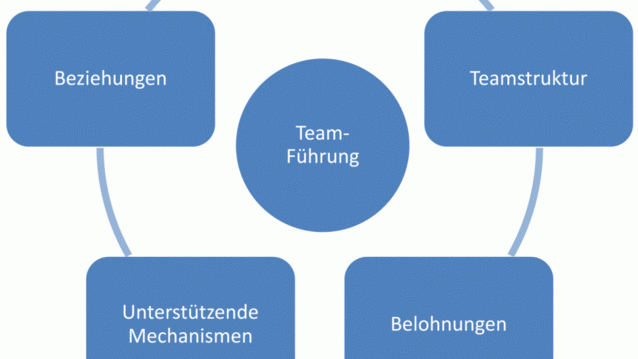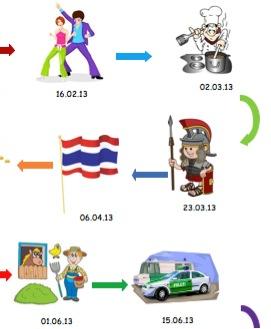The team success factors form a model in which the most important aspects of teamwork are highlighted. If there are problems in the team, these criteria can be used to investigate the causes. The model was developed by Marvin Weisbord
The team success factors
1. tasks / goals of the team: To what extent is there clarity / ¨agreement üabout the goals in the team? What must the team as a whole, what must the individual team members achieve in particular?
2. Team structure: What is the distribution of tasks within the team? Who is responsible for what? How is the work allocated? Does someone (e.g. because of their talents) have certain tasks or areas of responsibility? How far do these go?
3. Rewards: What are the benefits of the work? Where does the team have a sense of accomplishment? Mutual appreciation within the team?
4. Supporting Mechanisms: Concerns methodological knowhow such as meaningful meeting design and organization, type of decision making, &review if goals have been achieved, etc.
5. Relationships: How do the team members deal with each other? Are there rules of the game and do they make sense? How are conflicts handled? How is information organized - is it fetch or bring?
6. Team leadership: How does the team leader behave? Is he keeping the team on target? What team phase is the team in and is the team leader aware of it?
7. External Factors: Are the leadership structures set up sensibly so that the team can work effectively? Has enough responsibility been übent (budget, etc.)? How is the team provided with information? Is the team recognised and valued for its work? How is the team coordinated with other teams? How are material and personnel resources provided?
Application
If there are problems in the team, the team leader or team coach can first orientate themselves using the concept. However, it can also be useful to simply present this concept to the team, so that they can see for themselves "where things are sticking".
It is important that such a process does not end up in prejudging or judging character traits or attitudes of individuals. Rather, the team should find ways to better manage such problems in the future. Sometimes, however, it is enough simply to recognise what is lacking so that things "sort themselves out" again.
Image credit
Cover photo: Tim Baumann, based on "Six-Box Model" by Marvin Weisbord
Content may be automatically translated. Help improve the quality of the translation with your editing!




